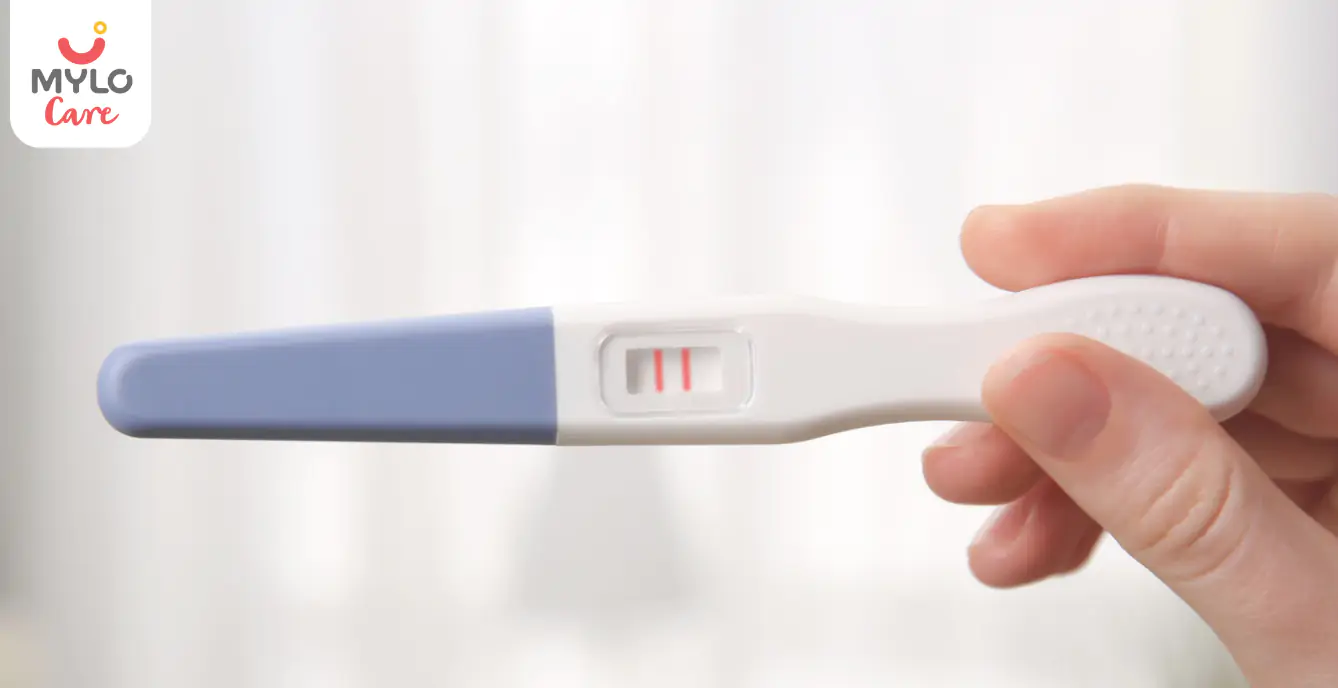Home

Maternity Leave

Is Maternity Leave 6 Or 9 Months?
In this Article

Maternity Leave
Is Maternity Leave 6 Or 9 Months?
Updated on 7 November 2022
A period during which a woman takes a break from work after the birth of the child is considered maternity leave. Maternity leave in India permits a woman to take time off work when her child is born. Previously, female employees were allowed only 12 weeks of maternity leave under the maternity Benefit Act of 1961. However, the Maternity Benefits Act of 2017 increased the period of maternity leave to 26 weeks. But non-compliance with the law and regulations carries a penalty.
By giving substantial maternity leave, organisations can support moms to bond properly with their babies, take care of their child's physical needs, and anticipate their important developmental stages. It is important to foster a better employee-employer relationship for a decent and long maternity benefit.
What Do You Mean By Maternity Leave?
Maternity leave is a well-intentioned initiative for expecting mothers by the Indian government. Under the Maternity Leave Act of 2017, a pregnant female employee can avail of leave for a certain period for the welfare of both the mother and the baby. This, in turn, increases added benefits to female employees. This act also specifies the varied categories of maternity leave and employer entitlements available to women in the commercial and private sectors. This is a 'fully paid leave' available to a working woman who is pregnant or nursing a baby to support herself and the baby. India's previous Maternity Act of 1962 has been amended significantly with the Maternity Act of 2017, which applies to enterprises and factories with ten or more employees, whether organised or unorganised.
While temporarily ceasing to work for the organisation, this allows them to care for the newborn baby. During this period, the mother is accessible to full payment. As a result, it is based on criteria that female employees must meet to be deemed valid.
Benefits Of The Maternity Benefit Amendment Act, 2017
In the legal structure of a business, several rules and rights are effectively incorporated, giving benefits to the employees who work there. So these rights are allowances that make working a long time worthwhile. While balancing their careers and personal lives, this law protects the interests of working women who would like to start a family, and this is one of the perks of the Maternity Amendment Act.
Additionally, the legislation provides pregnant women with the time and resources she requires to take care of themselves and their baby's health. The opportunities for surrogate and adoptive mothers are also expanded. Either you can take all leave at once, or you can get 8 weeks of paid leave before childbirth and 18 weeks available after delivery. The leave limit stays at 12 weeks if you are adopting a baby less than three months old or fostering or adopting a baby.
For corporations with more than 50 or more employees, providing free facilities becomes a requirement, including an option of working from home. Workplace benefits are entitled to female workers. However, they should be advised and educated about it. The HR or equivalent grade representatives must offer a copy of such information in writing or digitally when women join the workplace.
If a woman has undergone a medical termination or miscarriage, late-term abortion or termination of pregnancy with a tubectomy operation or has any illness after birth can seek an extension of one month well beyond the maximum allowable period with payment.
Women pregnant with their first or second child are the only ones to profit from the act's constraints. The rule is further restricted by requiring 80 days of continuous service and earning a minimum wage if you have a third or fourth child.
-
Work-from-home option
The law provides a provision that allows an employer to allow a new mother to work remotely from home. It would apply if the nature of the allocated employment allows you to work from home. This arrangement can continue for a certain period, even after maternity leave, if mutually agreed upon by the employer and employee.
-
Income option
If you have worked for at least 80 days in an organisation in the 12 months following your due date, maternity leave is paid in full. The maternity leave is paid at the rate of the average daily wage for the duration of your actual absence from work. A female employee is also provided an additional healthcare incentive of Rs. 3500 and her 12-week wage. Under the National Food Security Act of 2013, all pregnant and breastfeeding women are eligible for a maternity bonus of at least Rs. 6000.
Many companies also provide maternity insurance and other medical allowances. You can discuss this in detail with the HR department of your company. The law also allows for up to a month of sick leave if the illness or problem requiring leave is because of your pregnancy or preterm birth, in case you need it. However, you need to submit proof of illness. But you will also be entitled to your full wage during that month. You will not be allowed to do arduous work, stand for long hours or be asked to do any other work that may cause problems if your due date is within 10 weeks.
Eligibility For Maternity Leave
According to the Maternity Benefits Act of 2017, the eligibility requirements state that you must have worked for at least 80 days in a company to be eligible for maternity leave. And the indicated 80 days term must have been completed within the past 12 months. However, your benefits are limited to six weeks of leave starting from the day of the loss in case of a miscarriage. 12-week maternity leave is provided to a surrogate mother.
However, compensation throughout the leave period is determined based on the daily income for the length of an actual absence, according to India's Maternity Leave Law 2007. First, maternity leave in India was limited to six months. However, after the 2017 amendment act, it was increased to 6 months. In India, all women working in factories and establishments with at least ten workers have access to about 6 months of paid leave. At the same time, a mother with two or more children is allowed only 12 weeks of paid maternity leave.
The Importance Of Maternity Leave In India
Deciding to have a baby is a significant and life-changing decision, and it comes with many requirements and commitments. Emotional and physiological well-being and resilience are on the line for any couple. Taking responsibility for the children becomes more difficult if both parents are working. While it is significantly simpler for stay-at-home moms to take care of their children, is that to say that working women aren't thought to be there for their children when they require them? The answer is that women are the primary caregivers and nurturers and are legally allowed to take time off during childbirth and even after birth. Here are some of the advantages of taking maternity leave:
-
Since the woman is not resuming work, she is better suited to look after the well-being of herself and the baby.
-
Another key point is that a maternity sabbatical alleviates any monetary strains that may otherwise cause chaos. Pregnancy includes a slew of fees, including healthcare coverage for the mother for nine months and the baby after that. A price list of prenatal care, labour, drugs, immunisations and postpartum care is also included.
-
These paid maternity breaks are extremely helpful to low-wage workers and single moms.
-
In terms of mental health also decreases the chance of postpartum depression in new mothers and anxiety in babies after a comfortable delivery and postnatal period.
-
Women can recover more quickly, catch up on sleep and return to work after taking the necessary days off.
-
It also benefits to close the pay difference between genders.
-
It also aids in staff retention, particularly after offering maternity leave.
To preserve their rights, most companies must provide health care benefits to expecting women employees throughout pregnancy and postpartum under Indian law. It generally applies to all businesses, companies and organisations with more than 10 employees.
How To Apply For Maternity Leave?
A maternity leave application should be addressed to your manager, although there is no standard procedure, format or common application process that you must obtain. Granting maternity leaves is different for every company since they have their policies. In most cases, you must apply at least two months before time, stating that you have to take a leave from work to take care of your child and yourself.
On the other hand, prenatal leaves are requested at least 8 weeks before the due date. The procedure is simple and won't take long. If the company is kind, there won't be too many formalities, and things might move quickly.
Standard Rules Under The Maternity Leave Act
According to the provision, an employer should not subject a pregnant employee to demanding responsibilities such as working long hours ten weeks before birth since this might harm both the mother and the baby.
The female employee is prohibited from working for 6 weeks after delivery or miscarriage, and the company is responsible for her health and safety. The act also specifies that an employer cannot fire or terminate a female employee during maternity leave. Also, if an employer doesn't comply with the Maternity Act of 2017, there might be serious repercussions. A penalty of Rs. 5000 or a year in jail is the punishment for an employer who refuses to comply with the law.
What Should The Maternity Leave Act Include In Terms Of HR?
-
Every HR department must write a thorough Maternity Leave Policy as a necessary document. The institution should inform a pregnant employee regarding her rights and how to exercise them in writing or through email.
-
By government guidelines, HR should update the Maternity Leave Policy.
-
A pregnant employee is automatically excluded from the normal performance appraisal cycle.
-
A clause should be included allowing female employees to work from home.
Employed Pregnant Women's Legal Rights
When you are on maternity leave, an employer cannot fire you or issue a termination notice to you when you are on maternity leave that expires before your leave ends. Also, an employer cannot modify the terms of the agreement to your detriment during maternity leave. Additionally, if you are fired or terminated during pregnancy, you will be entitled to maternity benefits and a medical bonus.
Challenges Faced By The Employers
Although maternity leave has alleviated a great deal of misery for working women in India, employers, on the other hand, have their challenges too:
-
Employees are entirely responsible for the expense of maternity leave in India. The government and employer split the expenses in other countries.
-
Procuring additional staff for the pregnant employee who is on maternity leave. It also increases the expense of the business for training a temporary employee.
-
The employer has to provide creche facilities, an additional infrastructure expense, and hire skilled persons to run the creche.
According to data, there are more male employees compared to female employees in India. Employers are hesitant to hire women employees because of the looming and obligatory expenses compared to their male counterparts. As a result, for important roles and promotions in the organisation, women of marrying age and newly married women are not considered. Superior work roles and advancement opportunities are provided to women who have not married yet or who already have more than two or more children in the workplace.
Startups and SMEs are hesitant to hire female employees since they operate on a shoestring budget, and the government will not contribute to the cost. Some cannot take advantage of it, despite government rules mandating maternity leave policies. The employer is reluctant to cover the entire cost of the pregnant female employees out of their pocket.
You may also like:https://mylofamily.com/article/if-youre-heading-back-to-work-after-maternity-lea-13331?
Conclusion
Pregnancy is a natural phenomenon that does not diminish female employees' cognition or working capabilities. As a developing country, maternity incentives and medical bonuses should be appropriately examined and accepted by all organisations with full government support.
The provision helps numerous expecting mothers take care of themselves and their unborn children, despite many drawbacks and benefits of the existing framework. Since a woman is under considerable stress after giving birth, such perks might help her manage her job and personal life.



Written by
Vijay Kumar
Get baby's diet chart, and growth tips

Related Articles
Related Questions
Hello frnds..still no pain...doctor said head fix nhi hua hai..bt vagina me pain hai aur back pain bhi... anyone having same issues??

Kon kon c chije aisi hai jo pregnancy mei gas acidity jalan karti hain... Koi btayega plz bcz mujhe aksar khane ke baad hi samagh aata hai ki is chij se gas acidity jalan ho gyi hai. Please share your knowledge

I am 13 week pregnancy. Anyone having Storione-xt tablet. It better to have morning or night ???

Hlo to be moms....i hv a query...in my 9.5 wk i feel body joint pain like in ankle, knee, wrist, shoulder, toes....pain intensity is high...i cnt sleep....what should i do pls help....cn i cosult my doc.

Influenza and boostrix injection kisiko laga hai kya 8 month pregnancy me and q lagta hai ye plz reply me

Related Topics
RECENTLY PUBLISHED ARTICLES
our most recent articles

skin care
Top 5 Most Common Skin Care Myths Busted
Fears & Phobias
What are the Top Worries and Fears After Childbirth and How to Overcome Them

Caring for your Newborn
Is It Really Essential for People to Wash Their Hands Before Holding a Newborn?

TV & OTT
Top 10 Hollywood Movies on Hotstar

How Can You Easily Determine Using Seven Easy Homemade Remedies to Check if You’re Pregnant or Not?

TV & OTT
Best Crime Series On Amazon Prime
- Everything You Need to Know About Linea Nigra, the Line Around Your Belly
- Know Why Your Doctor May Change Your Due Date During Pregnancy
- 6 Ways to Protect Your Baby During Cold Season
- Are You Aware of These Warning Signs That You Should Be Careful of During Your First Trimester?
- Understanding Baby Sleep: 4-6 Months
- How to Take Care of Your Little One When He/She Is Arriving Early? What are Some Causes of Preterm Birth?
- When Should Parents Introduce Water to Their Little Ones? What Should Be the Accurate Quantity and How to Feed Your Baby?
- What to Do if My Toddler is Underweight?
- Toilet Training Your Child
- When Can I Start Giving My Baby Ice Cream?
- Amazing Ways to Help Your Toddler Talk
- Why Does My Child Seem So Frustrated?
- 10 Best Underrated Shows on Amazon Prime
- 10 Most Watched Amazing Amazon Prime Series


AWARDS AND RECOGNITION

Mylo wins Forbes D2C Disruptor award

Mylo wins The Economic Times Promising Brands 2022
AS SEEN IN
















- Mylo Care: Effective and science-backed personal care and wellness solutions for a joyful you.
- Mylo Baby: Science-backed, gentle and effective personal care & hygiene range for your little one.
- Mylo Community: Trusted and empathetic community of 10mn+ parents and experts.
Product Categories
baby carrier | baby soap | baby wipes | stretch marks cream | baby cream | baby shampoo | baby massage oil | baby hair oil | stretch marks oil | baby body wash | baby powder | baby lotion | diaper rash cream | newborn diapers | teether | baby kajal | baby diapers | cloth diapers |








